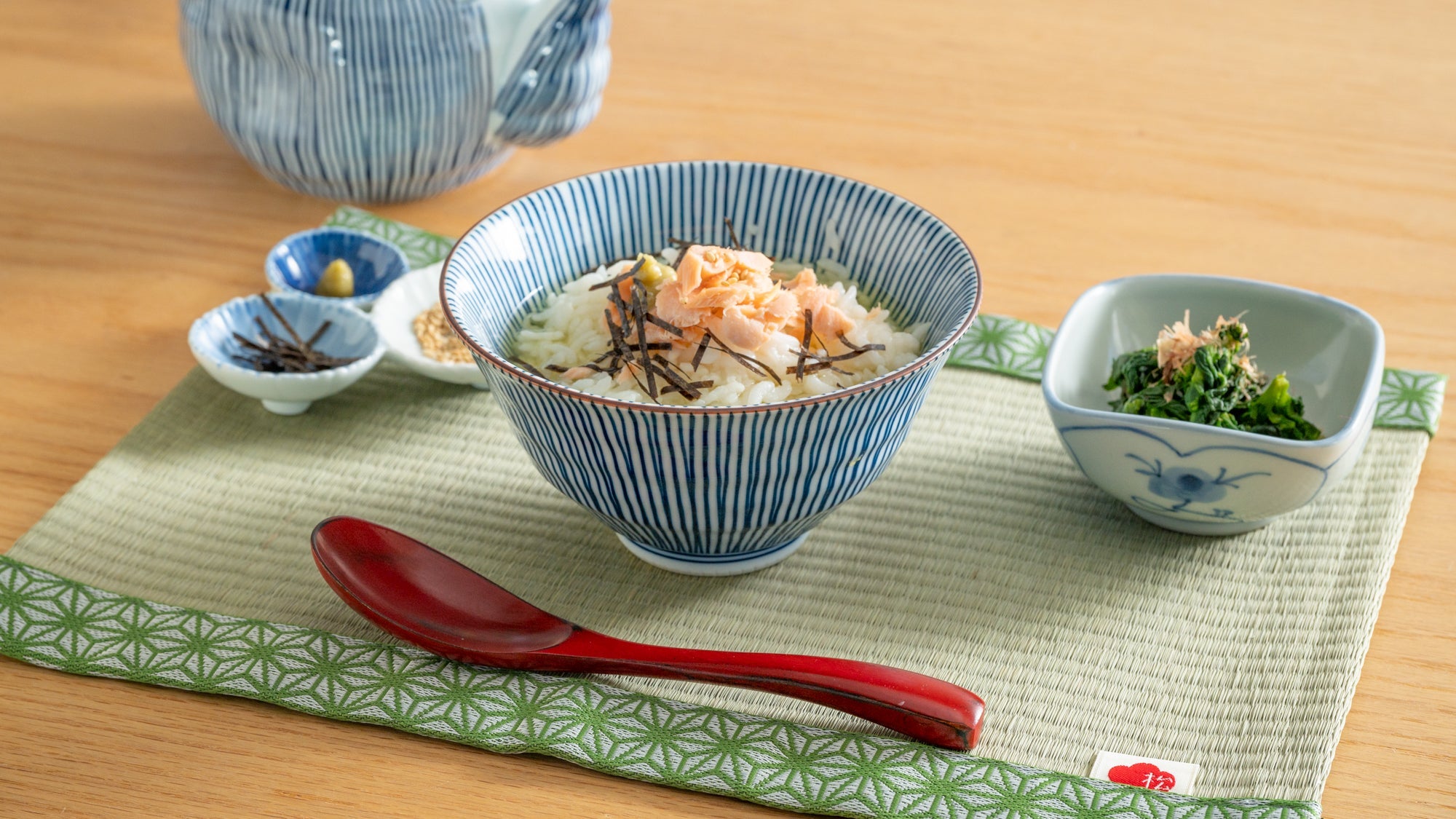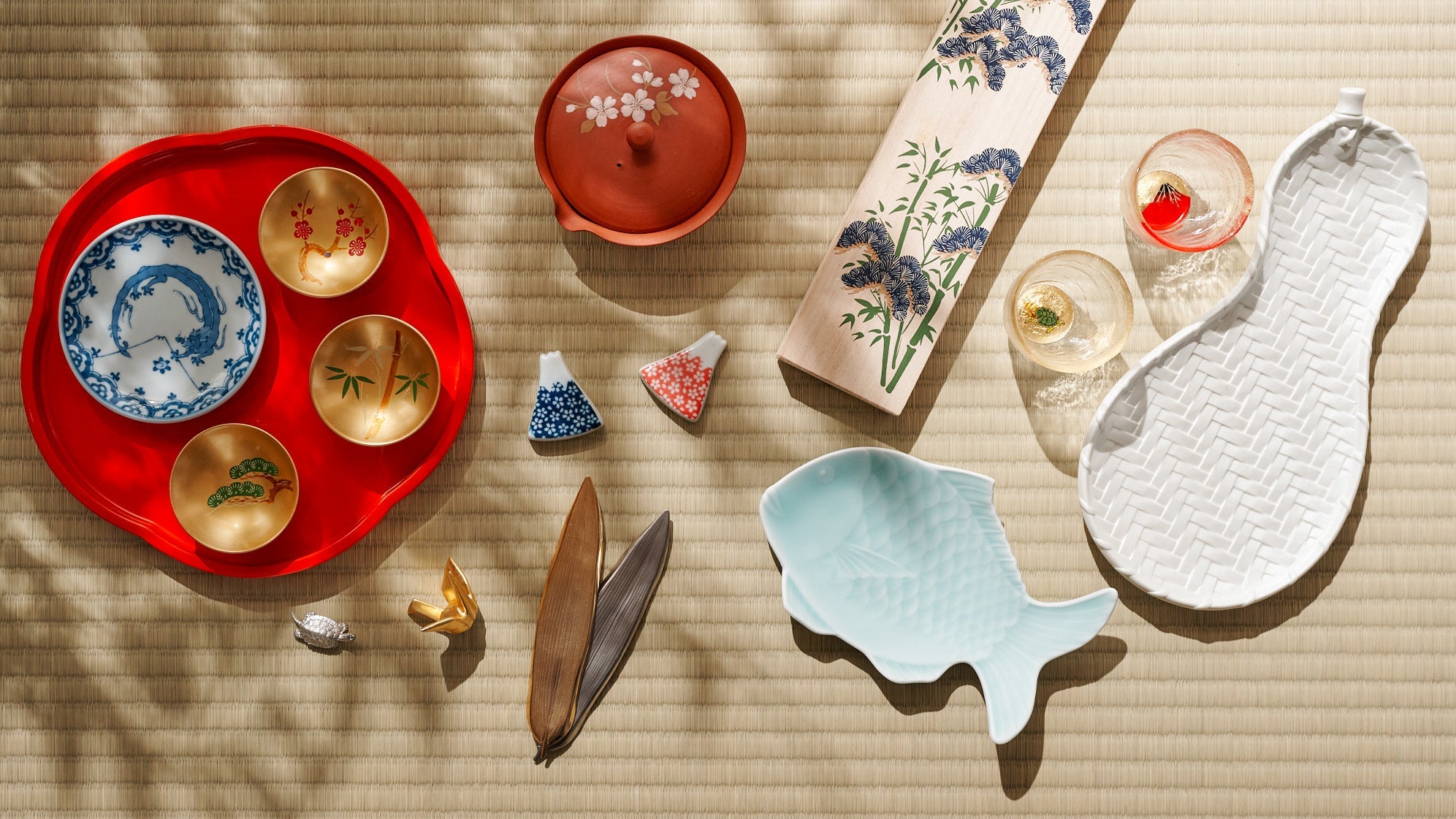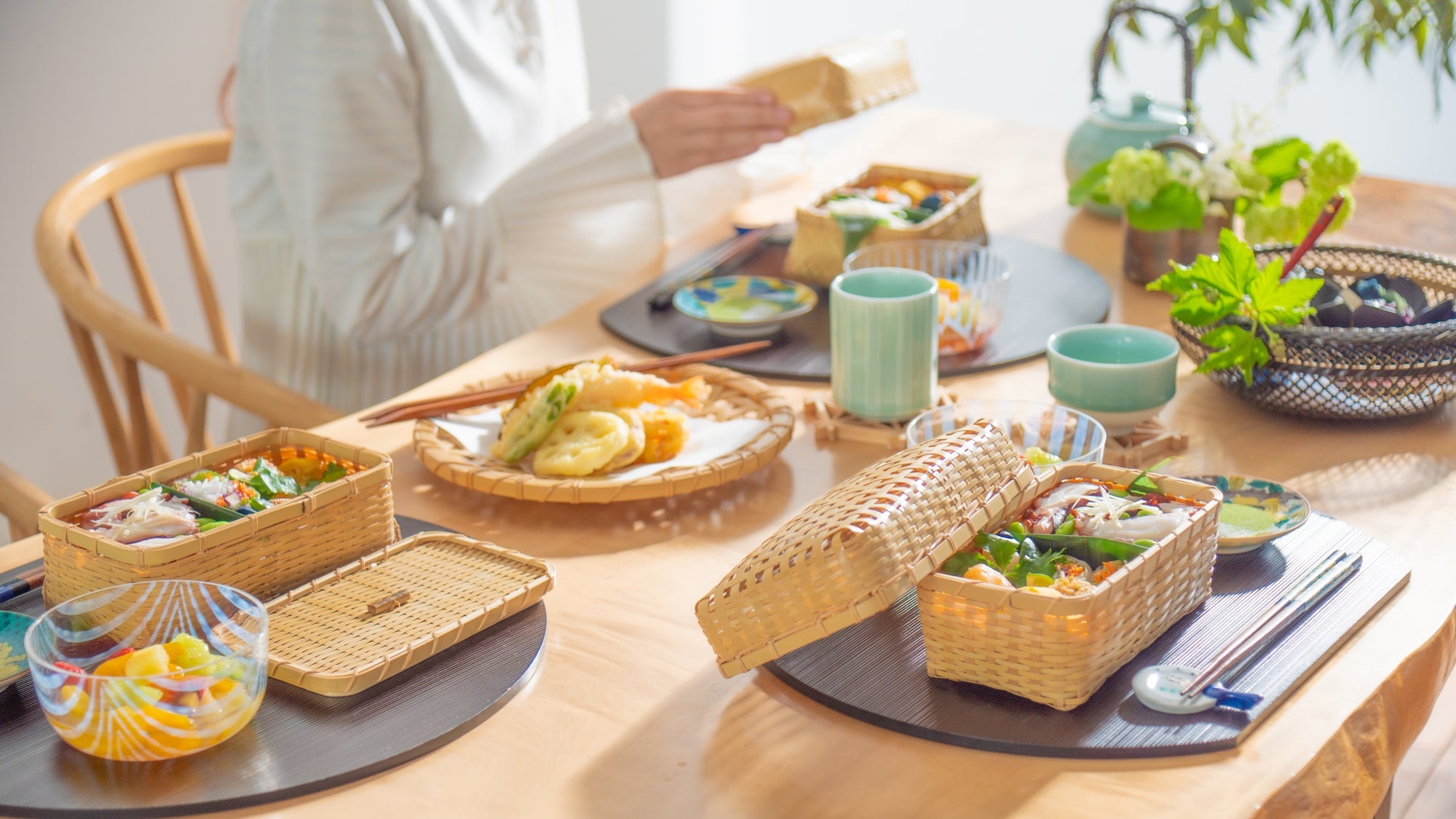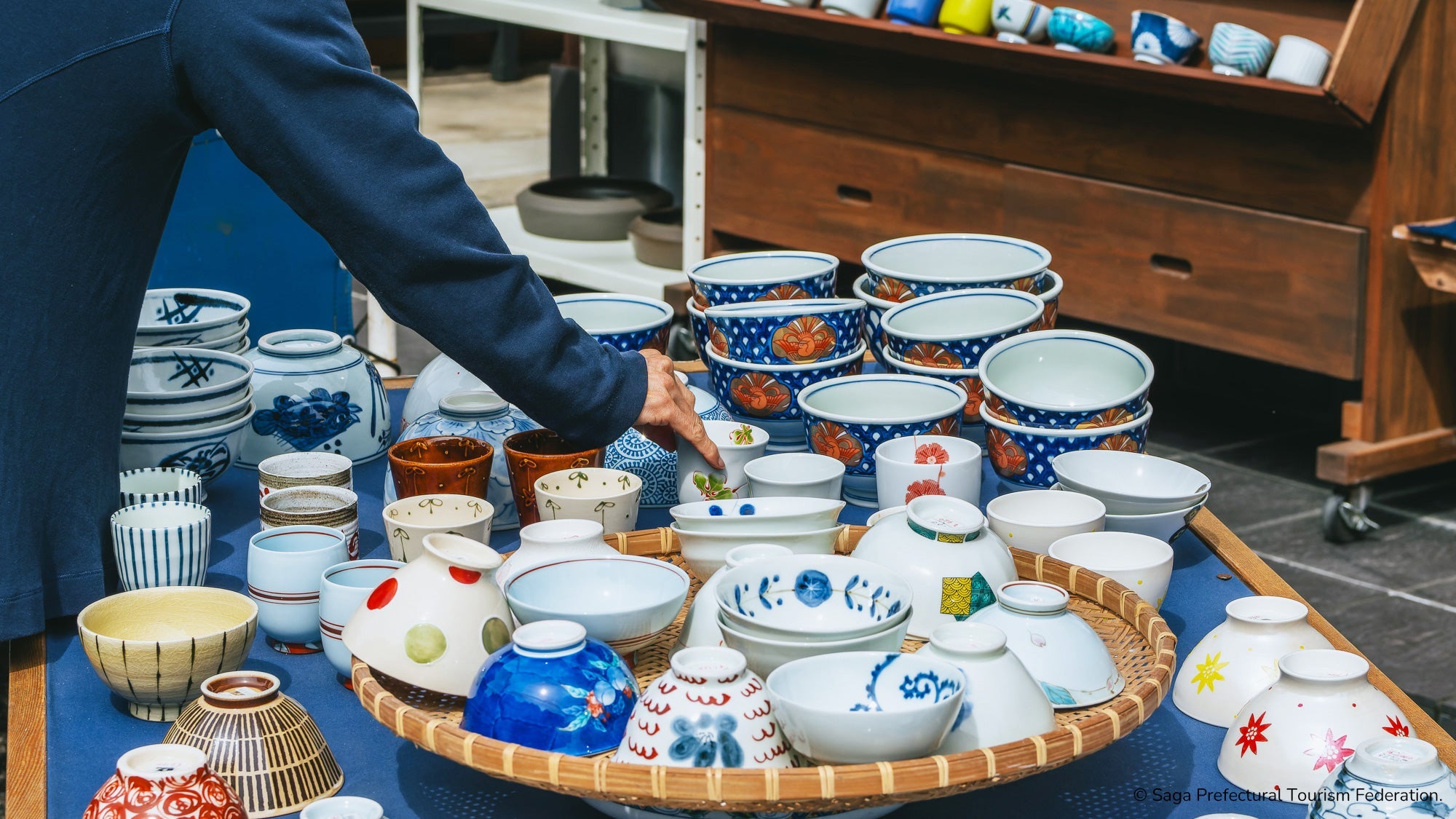
Street Eats & Summer Beats: Your Guide to Japan’s Festival Yatai
Written by Team MUSUBI
As twilight drapes over lantern-lit streets, the air comes alive with the irresistible sizzle of takoyaki and the sweet whisper of shaved ice. Wandering through rows of yatai stalls, you’ll encounter steaming yakisoba (stir-fried Japanese noodles), charcoal-grilled skewers, and crisp cotton candy—all served with a side of festive cheer. Each bite and every rhythmic taiko beat tells a story of centuries-old traditions and community spirit.
Come along as we guide you through Japan’s summer festivals, where unforgettable flavors and vibrant celebrations await.
Table of contents
What is Yatai?
Picture a wheeled cart adorned with colorful banners, glowing lanterns, and the tantalizing aroma of grilled delicacies wafting through the summer evening air. This is yatai—Japan's beloved mobile food stalls that transform ordinary streets into culinary wonderlands during festival season.

The word yatai refers to a small, mobile stall equipped with a roof, designed for selling food, drinks, or merchandise such as toys. More than just food carts, yatai represent a vibrant cultural institution, blending street food with community gatherings. They serve as temporary stages where skilled vendors perform culinary magic, turning simple ingredients into comforting, flavorful dishes right before your eyes.
A Storied Past: The History of Yatai
The origins of yatai date back to Japan’s Edo period (1603–1868 CE), first emerging in the early 18th century. In those days, yatai came in different forms: some were carried on the shoulders of traveling vendors (known as botefuri or furiuri), which sold soba noodles and other quick meals; others, like sushi stalls, were more stationary (tachiyatai) with temporary structures set up along busy streets. At a time when Edo (now Tokyo) was bustling with traveling samurai and migrant laborers, the demand for quick, affordable meals surged—popular offerings included soba, unagi (grilled eel), tempura, and sushi.
The modern image of yatai traces its roots to the post-World War II era. In the aftermath of the war, as cities began to rebuild, many people turned to simple pushcarts and mobile stalls as a way to restart their livelihoods—a tradition that still thrives today.

During matsuri (festivals), yatai line the pathways like edible jewels, with red and white striped awnings creating a festive canopy. Each stall offers its own specialty, from sizzling grilled meats to sweet confections, creating a vibrant marketplace where every palate can find its perfect match. Yet the yatai experience goes far beyond just food—it’s a sensory performance, a moment of connection, and a celebration shared under the open sky.
Taste of Tradition: Classic Yatai Delicacies
Step into the world of yatai, and you'll discover a treasure trove of flavors that have delighted festival-goers for centuries. Each dish tells its own story, blending tradition with the joy of shared celebration.

Takoyaki reigns supreme as the undisputed king of yatai cuisine. These perfectly spherical balls of batter, filled with tender octopus chunks, were invented in 1935 by Osaka street vendor Endo Tomekichi, who was inspired by akashiyaki from nearby Akashi City. Watching a skilled takoyaki master work is pure artistry—the rhythmic turning of each ball using metal picks, the precise timing, and the final flourish of bonito flakes dancing atop the finished product. The combination of crispy exterior and creamy interior, enhanced by tangy sauce and mayonnaise, creates a symphony of textures and flavors that has made takoyaki synonymous with Osaka's street food culture.

Yakisoba brings the satisfaction of comfort food to the festival atmosphere. These stir-fried noodles are said to have originated in Japan around 1950, shortly after the end of World War II. Prepared on massive steel griddles that become the heart of each yatai, yakisoba is tossed with cabbage, carrots, and your choice of protein. The secret lies in the sauce—a perfect balance of sweet, salty, and umami flavors that varies from region to region, often representing closely guarded family recipes.

Chocolate Banana represents the perfect fusion of international flavors and Japan’s festival culture. Chocolate became popular in Japan since its introduction in the Edo period, and imported tropical bananas became a favorite fruit, naturally leading to this beloved combination. As straightforward as the name suggests, these chocolate-covered bananas are very popular at summer festivals, often decorated with colorful sprinkles before the chocolate sets. The contrast between the cool, sweet banana and the rich chocolate coating provides a refreshing treat perfect for hot summer days.

Kakigori offers sweet relief from summer's heat. This shaved ice dessert, topped with colorful syrups, condensed milk, or fresh fruit, has been cooling down festival-goers since the Heian period (794-1185 CE). The kakigori served at festival stalls uses naturally produced ice and continually evolves with new syrup flavors devised by vendors. Modern variations include flavors like matcha, strawberry, and Blue Hawaii (a tropical blue syrup), but the simple pleasure of ice crystals dissolving on your tongue remains unchanged.

Ringo Ame (Candy Apples) showcases the artistry of Japanese confectionery at festivals. These glossy, red candy-coated apples on wooden sticks are a visual feast that catches the eye from across the festival grounds. The hard candy shell provides a satisfying crunch that gives way to the crisp, juicy apple beneath. The technique of creating the perfect candy coating—achieving that mirror-like finish—is a skill passed down through generations of yatai vendors.

Wata-ame (Cotton Candy) might seem like a modern addition, but this spun sugar treat has been enchanting Japanese children at festivals for over a century. The Japanese name literally means "cotton candy," and it's often shaped into elaborate sculptures and comes in flavors that reflect each season's character. Watching vendors create these sugary clouds on spinning machines is as mesmerizing as eating the final product.

Ikayaki brings the ocean's bounty to festival streets. This grilled marinated squid is prepared on hot griddles, where whole squid are pressed flat and grilled until they develop a perfect char. The squid is often brushed with a savory-sweet sauce that caramelizes as it cooks, creating an irresistible aroma that draws crowds. The chewy texture and oceanic flavor provide a satisfying, protein-rich snack that perfectly complements the festival atmosphere.
Matsuri Spotlight: Japan’s Iconic Summer Festivals
Summer in Japan means matsuri season, and with it comes the most spectacular yatai displays of the year. Among all of Japan's countless festivals, three stand supreme as the nation's most prestigious celebrations, each offering a unique yatai experience and cultural significance.
Gion Matsuri

Gion Matsuri in Kyoto is one of the three greatest festivals in Japan, and among them, it is often considered the largest and most extravagant. This magnificent celebration originated in 869, when, during an outbreak of plague that spread not only in the capital, Kyoto, but also throughout the country, a purification ritual was held. In this ceremony, sixty-six halberds—representing the number of provinces in Japan at the time—were erected to honor the gods of Gion and pray for protection from epidemics and disasters.
The festival runs throughout July, but the yatai experience peaks during the famous yamaboko processions. The festival's yatai offerings reflect Kyoto's sophisticated culinary culture, featuring refined festival foods and traditional sweets that have been perfected over more than a millennium. It has evolved into a huge celebration of Kyoto culture and a summer block party where locals and visitors gather to promenade in colorful yukata robes and gorge themselves on street food and beer.
Tenjin Matsuri

This spectacular festival started in 951 to commemorate the deification of the great scholar Sugawara no Michizane, enshrined as the God of Learning. Held annually on July 24 and 25, Tenjin Matsuri is unique among the three great festivals for its stunning combination of land processions and river celebrations. Tenjin Matsuri is the amalgamation of a boat festival, a fireworks display, and traditional street celebrations. The yatai here provides local specialties like takoyaki, okonomiyaki, and other Osaka street food favorites. The festival's proximity to the water creates a magical atmosphere where yatai line the riverbanks under the glow of fireworks.
Kanda Matsuri

Kanda Matsuri started in the early 17th century and has been celebrated for 1,300 years. What makes Kanda Matsuri particularly special is that it's held only in odd-numbered years, making it a highly anticipated event. The yatai experience here represents the pinnacle of Tokyo's street food culture, featuring both traditional Edo-period favorites and modern innovations that reflect the capital's dynamic culinary scene. The festival transforms the business district of Kanda into a vibrant celebration where centuries-old traditions meet contemporary Tokyo energy.
The magic of yatai lies not just in the food itself, but in the entire experience—the anticipation as you approach a stall, the friendly interaction with vendors, the joy of eating with your hands while standing among fellow festival-goers, and the satisfaction of discovering new flavors while honoring old traditions.
As twilight deepens and the festival lights grow brighter, as the taiko drums echo through the summer air and the aroma of grilled delicacies beckons you forward, remember that you're not just enjoying exceptional street food—you're becoming part of a living tradition that celebrates community, craftsmanship, and the simple joy of sharing good food under the open sky.








Leave a comment
This site is protected by hCaptcha and the hCaptcha Privacy Policy and Terms of Service apply.